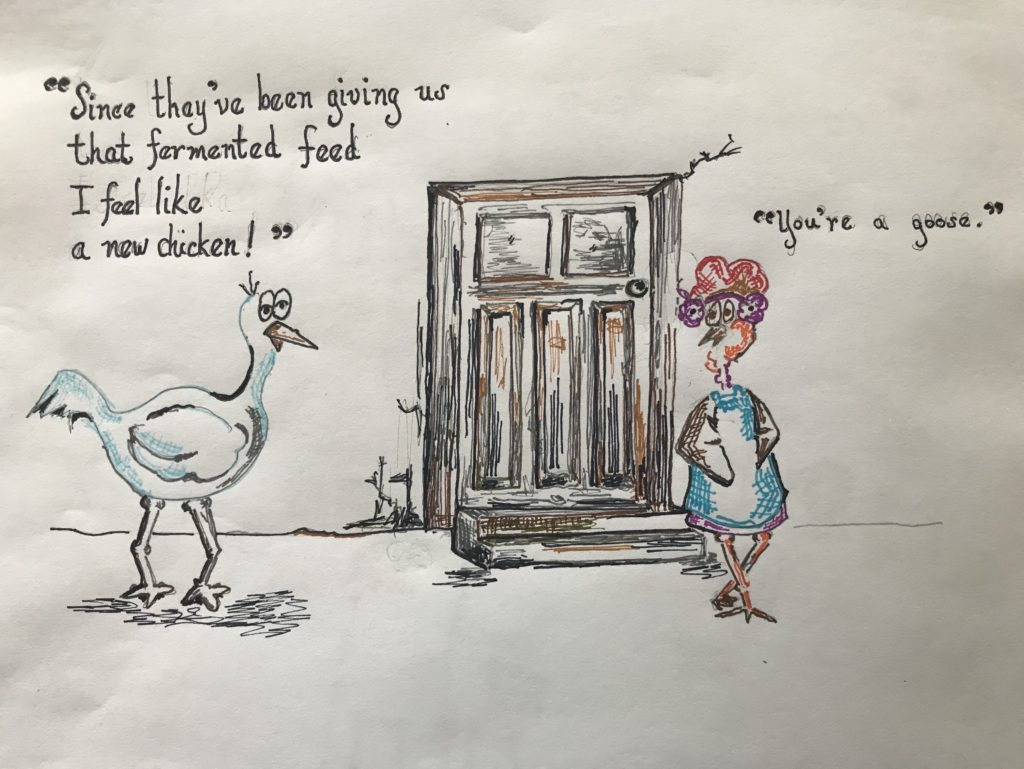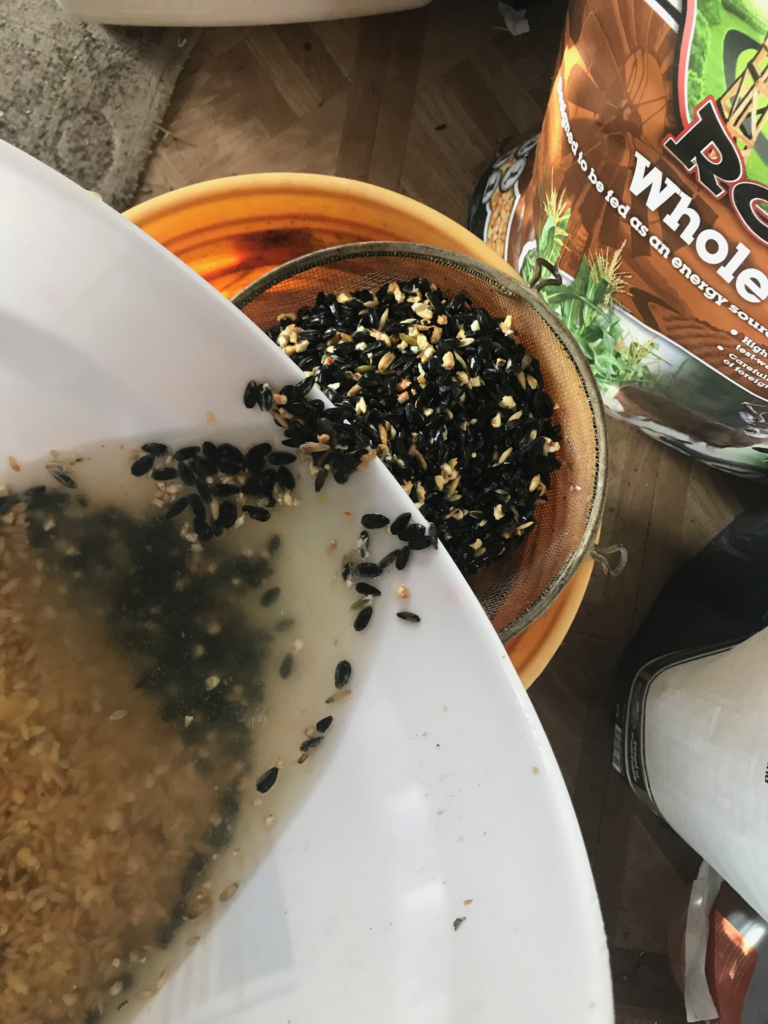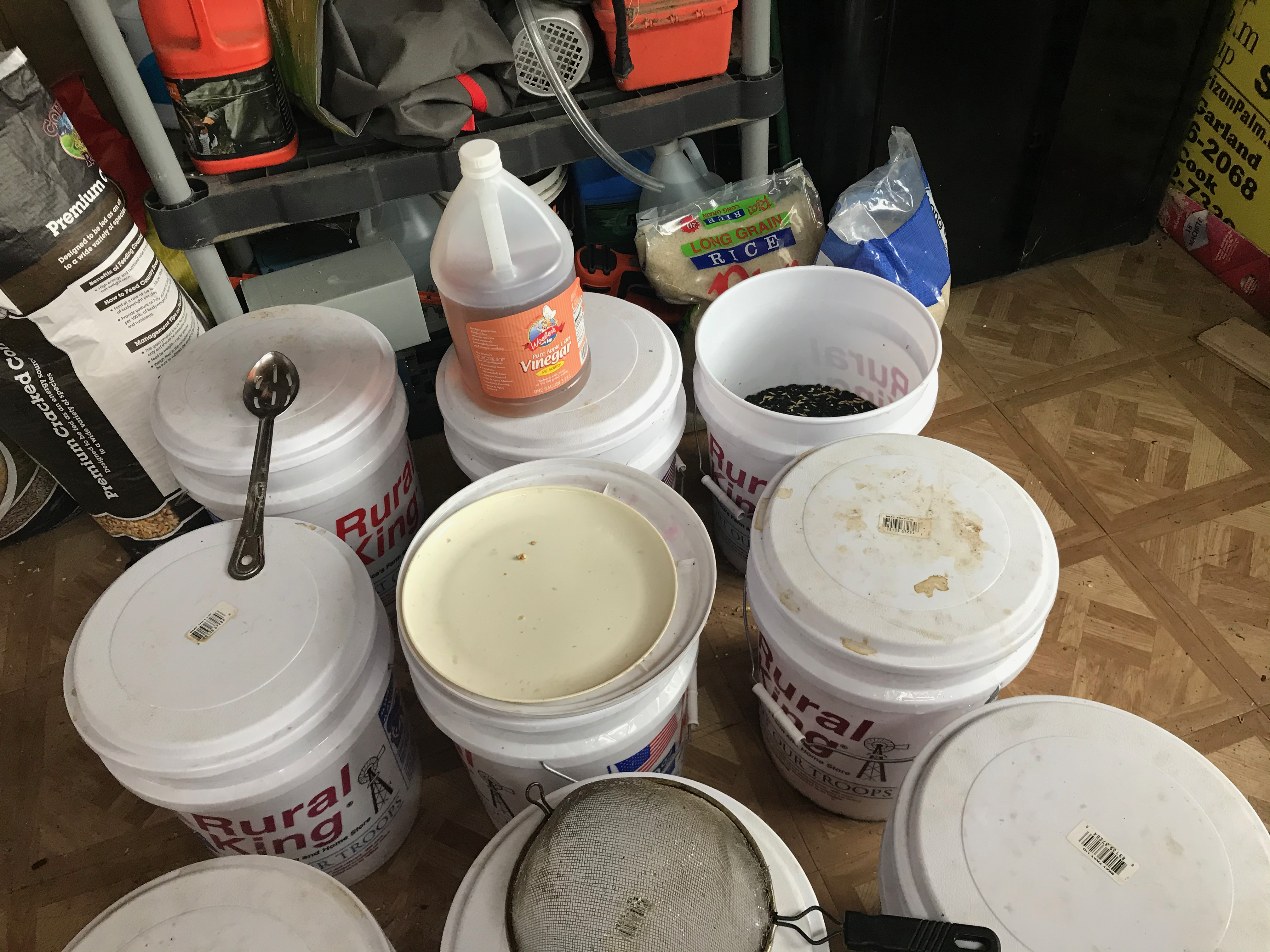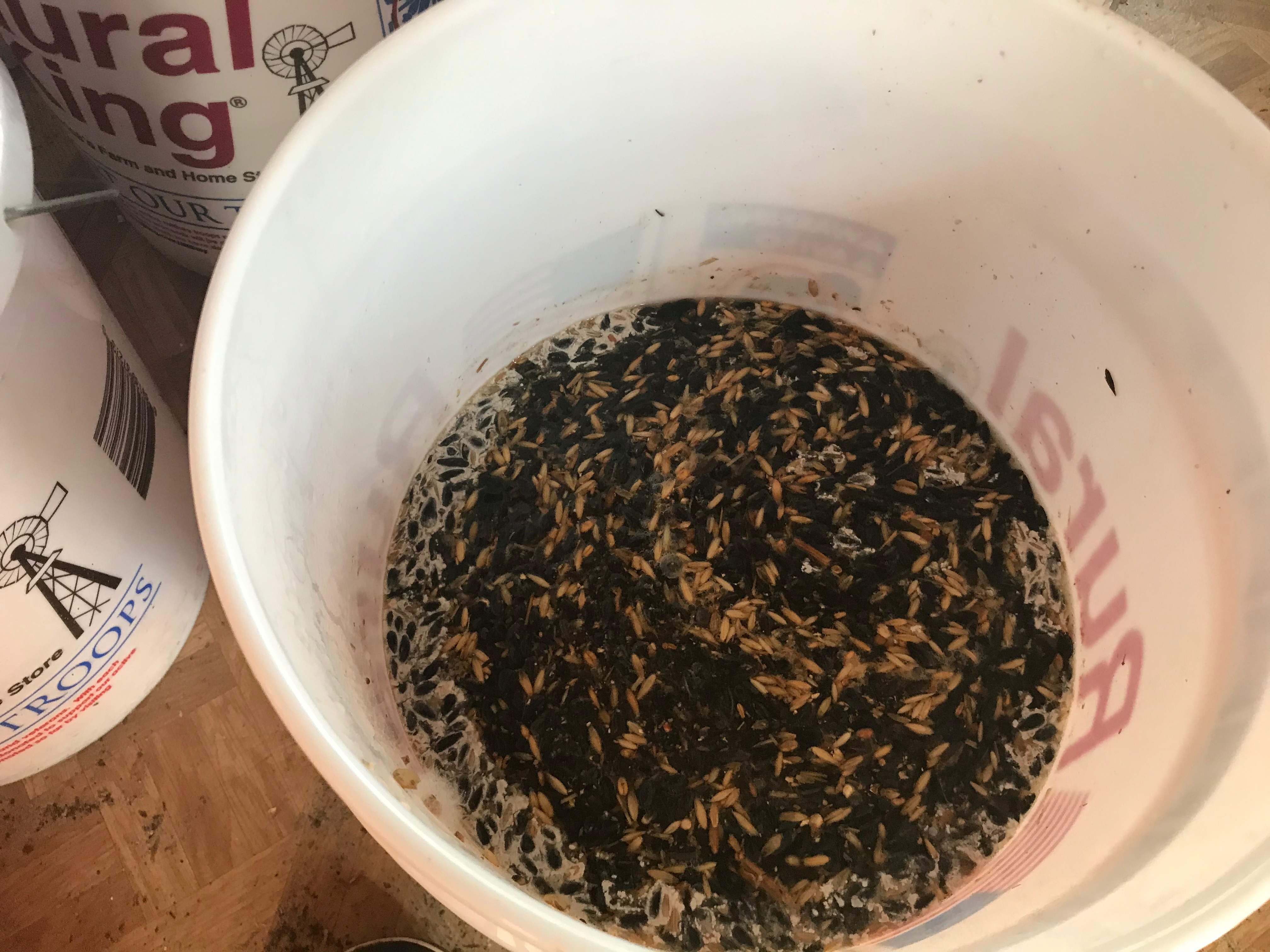Fermented Feed for Goats Plus
When you ferment grain it raises the protein content to anywhere from 18% to 21%. Dried barley is only 11% protein, which isn’t enough to make milk, meat or eggs. It needs something to increase the protein, and most folks have to add something like alfalfa or linseed meal.

For our fermented feed we use whole oats, feed wheat, cracked corn, and Black Oil sunflower seeds, also, whole corn for the goats and hogs. We use a three day 5-gallon bucket system, adding ACV to the bucket about 1/3 to 1/2 full of non-chlorinated water. Place a plate on top of the feed in the bucket to act as a fermenting weight and keep the grain submerged. This will cut down on mold.


The fermentation process starts when bacteria found on raw grains begins to partially break down the starch in the grain. Once fermentation has occurred the enzyme content on the grains improves, and the levels of vitamins B, C, and K increase. Also, fermented feed is easily digestible. Fermented grains allow the animals to remain hydrated, while allowing for the consumption of a natural probiotic versus a synthetic option.
Because fermented grains are almost fully absorbed into the body, goats produce very little waste (poop). In addition to little waste, goats that consume fermented grains eat less, which allows for a reduction in how much feed needs to be offered.
What makes fermentation beneficial for poultry? In a nutshell when fermented feed is consumed it provides natural probiotics to the body, packed full of good bacteria and yeast. Fermented feed can be consumed by all livestock, including dogs and cats, and even ruminants like goats.
Livestock feed ferments when allowed to soak in water, typically for three days. Temperature plays an important factor on how quickly food ferments. Fermentation occurs between 70 to 75 degrees Fahrenheit. Anything over can cause the item to spoil, whereas anything under can cause the item to not ferment.
Lactic acid bacteria begins forming on the second day of the fermentation process. The beneficial bacteria consumes the sugars found in the grain and begins to multiply. The lactic acid makes the environment unsuitable for bad bacteria to thrive. What remains in fermented feed are beneficial microbes.
Fermented grains should be fed at the ratio of 1 lb for each 100 lbs of animal, daily. That works out to about 1/2 cup twice a day for our Dwarf Nigerian milk goats. Don’t let them talk you into giving them more!!
Happy Homesteading,
T.


